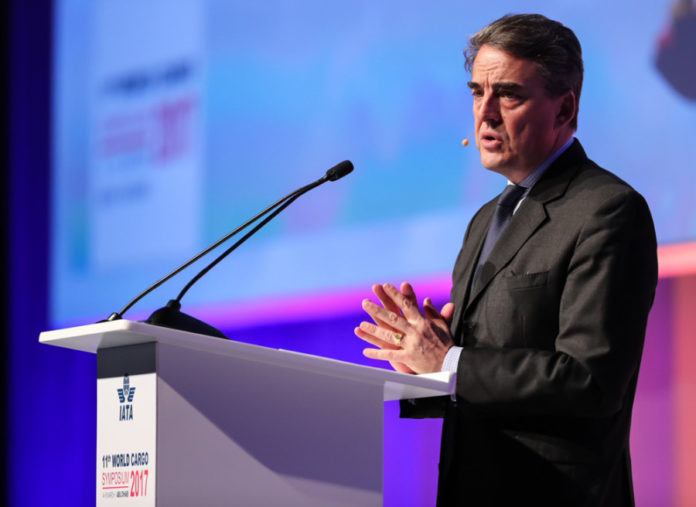

The International Air Transport Association (IATA) says global airfreight markets grew by 8.4 per cent in February – measured in freight tonne kilometers (FTKs) – compared to the same period last year.
After adjusting for the impact of the leap year in 2016, IATA says demand increased by 12 per cent – almost four times better than the five-year average rate of three per cent. Freight capacity, measured in available freight tonne kilometers (AFTKs), shrank by 0.4 per cent in February.
The association notes the continued growth of airfreight demand in 2017 is consistent with an uptick in world trade which corresponds with new global export orders remaining at elevated levels in March. Of particular note it says is the expanded volume of semi-conductor materials typically used in high-value consumer electronics.
Asia Pacific saw FTK growth of 11.8 per cent, Africa 10.6 per cent, Europe 10.5 per cent, North America 5.8 per cent, the Middle East 3.4 per cent, but Latin America saw a fall of 4.9 per cent.
IATA’s director general and chief executive officer, Alexandre de Juniac says: “February further added to the cautious optimism building in air cargo markets. Demand grew by 12 per cent in February – about four times the five-year average rate. With demand growing faster than capacity, yields got a boost. While there are signs of stronger world trade, concerns over the current protectionist rhetoric are still very real.
The rapid growth of niche markets such as cross-border e-commerce and time and temperature-sensitive pharmaceutical are showing robust growth, IATA explains.
“Any optimistic look at the future sees growing demand for specialized value added services. Shippers are telling us that the key to turning the current uptick in the cargo industry’s fortunes into longer-term growth is modernising our antiquated processes. We must use the current momentum to push ahead with the elements of the e-cargo vision – including the e-air waybill which is nearing 50 per cent market penetration,” adds de Juniac.











